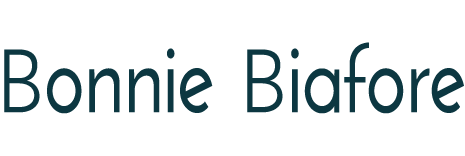An Exception Plan is a pre-agreed fallback approach to implement if a project gets into trouble. It’s more than a mitigation plan to address a single risk. An exception plan supplies an alternative project plan to recover from unacceptable conditions, such as exceeding the accepted tolerances for schedule delays or budget overruns.
First, let’s look at the different definitions for Exception Plan. In PRINCE2, an exception plan is applied when a phase will exceed its cost or schedule commitment. Other methodologies use exception plans (or exception documentation) to show when overall project constraints are at risk.
The exception plan in this article focuses on increasing the efficiency of responding to a troubled project. The plan includes course correction actions that have been pre-approved by management. In other words, an alternative plan to recover the project is ready to go. That means you can immediately implement the exception plan when project parameters are going to be exceeded. This pre-agreed exception plan saves time and money.
Here are some tips for when an exception plan might make sense and what the plan might propose:
Alternative project options are workable. Exception plans are useful only when you have flexibility in scope, schedule, or budget. Exception plans often propose cuts to scope or changes to the original approved timeline. For example, the plan could cut non-essential deliverables to bring an over-budget project back in line. In this case, management must be comfortable with and approve these changes ahead of time.
Alternate risks are acceptable. An exception plan walks a fine line between delivering value and adding risk. For instance, you might reduce quality management tasks to save time and money. This choice is practical if enough quality management activities remain after the task reduction. Even then, cutting quality management adds risk, which must be acceptable to stakeholders. For another example, the plan could propose decreasing organizational change management activities. Once again, the increased risk of implementation issues needs to be acceptable to management and project stakeholders.
Exception plans for agile projects are different. Issues with agile show up as delivery shortfalls, such as committed features that are late — or not delivered at all. Exception planning for agile projects usually focuses on engaging more experienced people to help get things back on track. Completing features in the backlog increases the business value of the project. However, management needs to be OK with the cost of these additional skilled resources.
The plan increases project management support. A project that is outside acceptable parameters presents project management challenges. Often, a project suffers due to a lack of technical or in-depth project management skills. The exception plan needs to address that shortage. However, an exception plan that increases the burden on the PM isn’t helpful. In other words, adding more management control deliverables without adding staff to create them makes things worse, not better. So, exception plans also need to include increased project management support. Management must commit to providing the additional project management resources as well as other changes from the exception plan.
Do you have questions or suggestions about how to use an exception plan with a project? If so, join the conversation in the comments section.
For more about project planning, check out my Project Management Foundations course.
Coming up:
October 2022 will be a busy month. My updated Project Management Foundations course is due to go live. And you can see me in several LinkedIn Office Hours live broadcasts.
October 12, 2022 11AM MT- Project Baselines: Basics and Best Practices
Once management approves a project, the project manager baselines the project. What is a baseline? What do you capture in a baseline? What happens when you create a baseline in Project? What are best practices for making baselines more helpful to managing projects effectively?
In this interactive Office Hours presentation, Bonnie Biafore and Ira Brown will share best practices at all stages of baselining.
Link to event https://www.linkedin.com/video/event/urn:li:ugcPost:6978438578267664385/
Oct 17, 2022 11AM MT- Leading with Curiosity
Questions and answers are inputs into any system or project, and they drive the output — whether the system is making dinner or launching a new product. The more diverse the inputs, the more innovative the output! Asking the right questions from the outset is crucial to setting up a system or project for success and achieving the best outcomes. To turbocharge results, you need to go beyond the usual questions like “What is the goal for the endeavor?” and “What is the best strategy for achieving that goal?” You and your team need to be curious and creative throughout the endeavor. In this Office Hours session, Natalie Nixon and Bonnie Biafore will explore what it means for a cognitively and experientially diverse team to be curious and creative and what you, as a leader can do to support that effort.
https://www.linkedin.com/video/event/urn:li:ugcPost:6979155332908400640/
Oct 27, 2022- Sometimes, the hardest part of innovation isn’t coming up with the great idea. It’s implementing it. Across the organization.
If you are trying to lead your organization in thinking (or doing) differently, you need to balance inspiration and operations. In this engaging and interactive conversation, LinkedIn Instructors Bonnie Biafore (Project Management Foundations) and Robbie Kellman Baxter (Become an Entrepreneur Inside a Company) will share best practices in scaling your great idea throughout your organization.
https://www.linkedin.com/video/event/urn:li:ugcPost:6978746469797244928/










